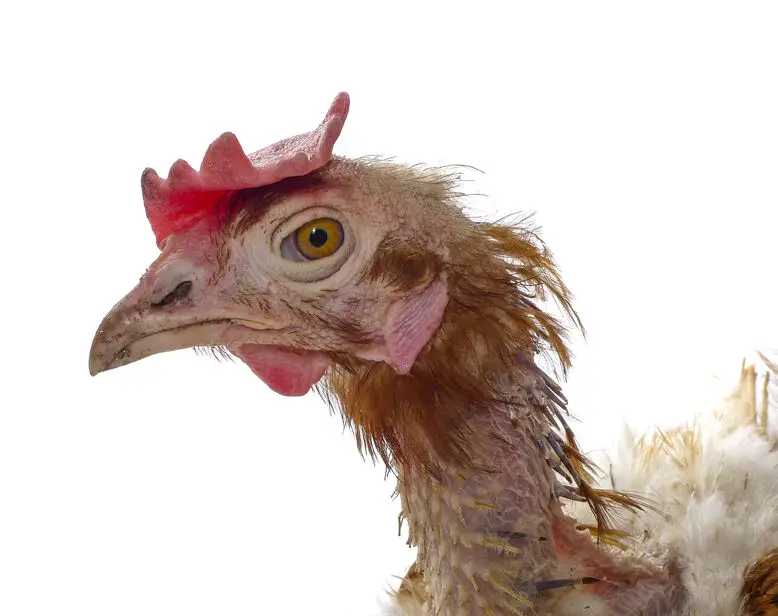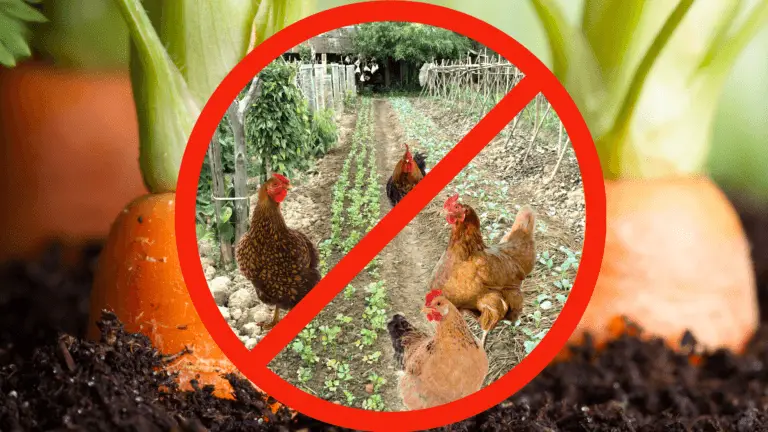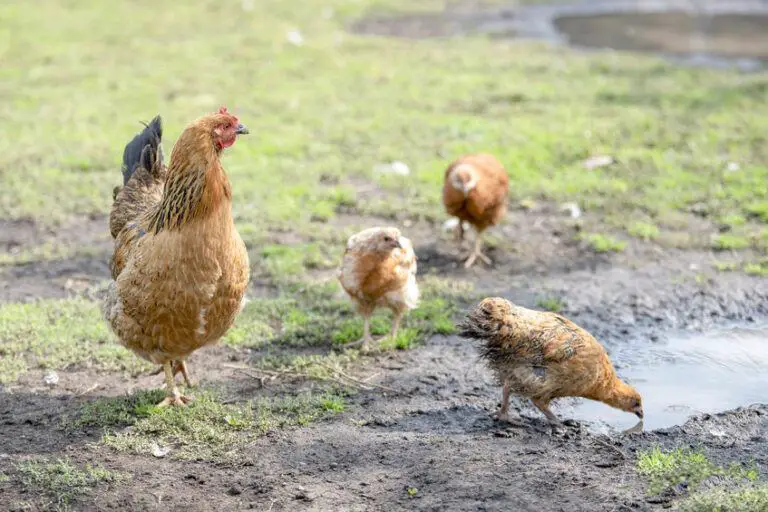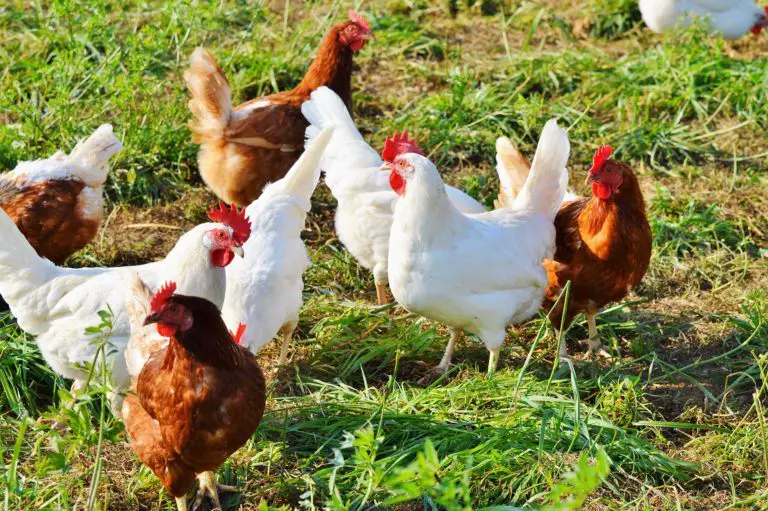My Chickens Are Molting! No Need To Panic And Here’s Why
If you have gone out to your coop to find feathers strewn about and your chickens are standing there naked, don’t panic! They are more than likely going through a natural process called molting.
There’s nothing more pathetic than seeing your pet chickens bald, boney, and looking like an emaciated creature from a tarp pit. Understanding more about molting puts your mind at ease, and it helps you to look past their rather compromising appearance.

A Historical Trip Back To The Ancient Chicken
Chickens have been around for thousands of years, and molting is a necessary event they go through to regain sets of healthier feathers.
Before humans even came into contact with the Amazon fowl (first species of chickens), these birds molted naturally for a reason you may not expect! The fowl back then lost feathers and regrew them to ditch the dingy looking plumage and take on a new look that attracted potential flock members to join. Dr. Brigid McCrea, Ph.D. (poultry expert), explains how new feathers were eye-catching in those times.
Gaining new feathers was like a status symbol back then. Fowls outside of a flock of fresh-feathered birds thought, “Hey, these birds exude pristine health. They must have a great source of food, so I’ll join them!” It’s quite like our culture today. We are more prone to desire a particular lifestyle based on what we see. Luxury, healthy, and flashy are attractive traits we covet. Now put the ancient Amazon fowl in the equation. They perceive a fowl with a hot new set of feathers as healthy, flashy, and luxuriously lavishing.
Modern Molting
Our backyard chickens today don’t necessarily molt to attract prospective flock members. They molt for the simple fact that the loss and regrowth of feathers is something they still do naturally. Egg layers begin to lay fewer eggs and stop altogether. They cannot molt and lay eggs simultaneously because of the amount of energy they expend when molting.
When Do Chickens Molt?
Molting begins in chickens around 18 months old and continues throughout their life. Molting typically starts as summer rolls into fall. Growing a new set of feathers provides better insulation against the approaching colder months.
Other Reasons For Feather Loss Outside Of Molting Season
- Stress
- Lice or mites
- Illness
- Mating
- Brooding
- Being picked on or bullied
- Attempted attack by a predator
Fully Appreciating The Feather!
Did you know that all birds undergo feather molting? It’s quite something to ponder hummingbirds to ostriches losing their feathers and having that featherless, vulnerable appearance!
Feathers are 90% keratin, which is a dead protein that grows. Human hair and nails are also keratin. For us, we must continually cut our nails and hair; otherwise, the growth would be unmanageable. However, chickens don’t “cut” the dying feathers off; they grow new ones, encouraging the old one to drop off.

The Process Of Growing A New Feather
All birds, including chickens, have feather follicles. Cells building up inside the follicle begin to push up and out into what’s known as a pin feather. Pin feathers appear as a barb-like pin. The sheath is the outer layer of the pin feather. It protects the blood vessels and formation of a new feather inside as it continues to develop.
An impressive feat of nature occurs in the developing pin feather when colors and patterns are formed. Chicken feathers in breeds with spots, mottling, variegated shades, etc., undergo a process within the developing pin feather. Patterns are created by cells and pigmentation coordinating together. These cells and pigmentation also work together, taking turns at the right times to form variations in coloring to develop the right color and the pattern simultaneously.
Once the pin feather has matured, the sheath is broken and removed through the chicken preening itself. The new feather expands and continues to grow. It’s somewhat of a metamorphosis similar to that of a caterpillar into a butterfly!
Like this post? Pin it
The Inhumane Act Of Induced Molting
You may have heard of induced molting. It’s not something we support or condone doing because of the cruelty it inflicts on the chickens. Some commercial egg-laying farmers and broiler farms use this method to encourage quick molting without regard for their chickens’ welfare.
Induced molting is typically accomplished through withholding food for several weeks, while the chickens are kept in areas without lighting.
Do’s And Don’ts During Molting
Do…
- Provide your chickens with plenty of water and high protein food.
- Be patient because some chickens molt slower than others.
- Clean and discard shed feathers. Keep the area as clean as possible.
- Encourage a less stressful environment during molting.
- Be vigilant of picking and bullying between chickens.
Don’t…
- Feed your chickens cat food, as many blogs recommend. Stick with food appropriate for chickens.
- Attempt to pick at pin feathers to break the sheath. Allow your chickens to naturally preen and accomplish this on their own.
- Cause undue/added stress to your chickens while they are molting.
- Induce molting, regardless of what may be recommended out there.
- Handle the chickens.
What You Can Expect During A Molt
One of the first things you will notice when your chickens begin molting is, of course, the loss of feathers. Your egg layers will start to taper off and stop laying altogether as molting starts. Temperaments change, and your lap chicken will go from loving time with you to not wanting to be handled at all. Don’t take it personally; it’s just part of the process.
Molters become withdrawn and may even retreat to quiet places where the stress level is lower. Often, a flock of molting birds become grouchy and begin to pick and bully others, which certainly doesn’t do much for relieving stress.
Lastly, your molting chickens may not eat as much as they usually do. Decreased appetites during molting are normal.
The Last “Cluck”
For those of us who are first-time chickeneers, when the first molt hits, it can be quite an anxious time for us and our chickens. It helps in understanding this natural process in a bird’s life. As the leader of your flock, the best thing you can do during molting is to provide the best peaceful environment possible for your birds.
Allow them to get through the process, and life can resume where you can handle and coddle them as much as you did before. If you have little chickaneers, educate them on molting and what they can do/don’t do to be at their best for the chickens.
Happy chickening!







